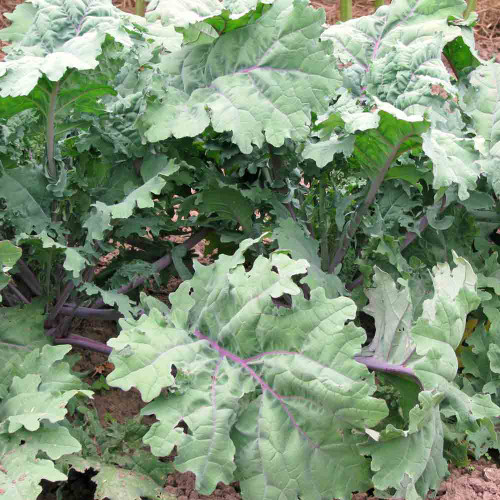Description
Red Shiso/Perilla – Basil’s Aromatic Asian Cousin
Long popular in Japanese cuisine, the beautiful, frilly, deep purple young leaves are added to salads, used to wrap sushi, and served with sashimi. Regarded as an indispensable condiment for its unique vibrant flavors, described by some as slightly gingery and by others as a blend of mint and licorice. Has strong flavors and aromas of spearmint, basil, anise, and cinnamon. Slicing it into strips accentuates these flavors. Chopped shiso buds are especially gorgeous and delicious, making a simple yet striking garnish. The seeds are an essential part of the famous seven spices of Japan, originating over 300 years ago in Kyoto.
Details
An erect, annual herb from the mint family that grows 12” to 36" tall with purple or green stems with four parallel grooves, blooming August to October.
History
Considered to be native to China and specifically mentioned in ancient manuscripts, Shiso was brought to Japan in the 8th century and has been loved ever since. It was brought with Asian immigrants to America in the 1800s, where it naturalized and became common in pastures and along roadside ditches in the southeast.
Its strikingly attractive purple to dark red leaves and ability to attract loads of pollinators has landed it a supporting role as a landscaping plant, often seeming to wear a coat of butterflies when the blossoms first open up. Only recently have the edible and medicinal qualities been re-discovered.
Uses
Besides being strikingly pretty, it is used as an ingredient in soups, rice, seafood, meat and vegetable dishes, as a spice, as a dye, and even as an oil.
The dried leaves and blossoms also make a delicious, intensely colored tea in cooler weather; fresh leaves are juiced, added to sorbets, used for the deep red color in pickled eggs and ginger, and used instead of fresh basil leaves to make an outstanding pesto. The color, interest, and flavor it adds to green salads, roasted or stir-fried vegetables, or even in simple scrambled eggs make this a go-to, must-grow herb.
Growing Tip
The flavor is best when fresh, harvest in the morning when it’s cool and place the leaves in a plastic bag in the refrigerator after rinsing to keep longer. For dried use, harvest leaves in the morning and set out to air dry until brittle, then store in an airtight container. Self-seeds readily in the garden.
From the soil to the seed to the food you eat - we'll help you grow your best garden!
1 Review
-
Give shiso some shade in hot climates
Another one I grow in a pretty shady spot in the desert, under an overhang so it only gets about an hour or two of direct sun daily. I dry it to use in furikake, a Japanese herb blend used to sprinkle on rice.

















